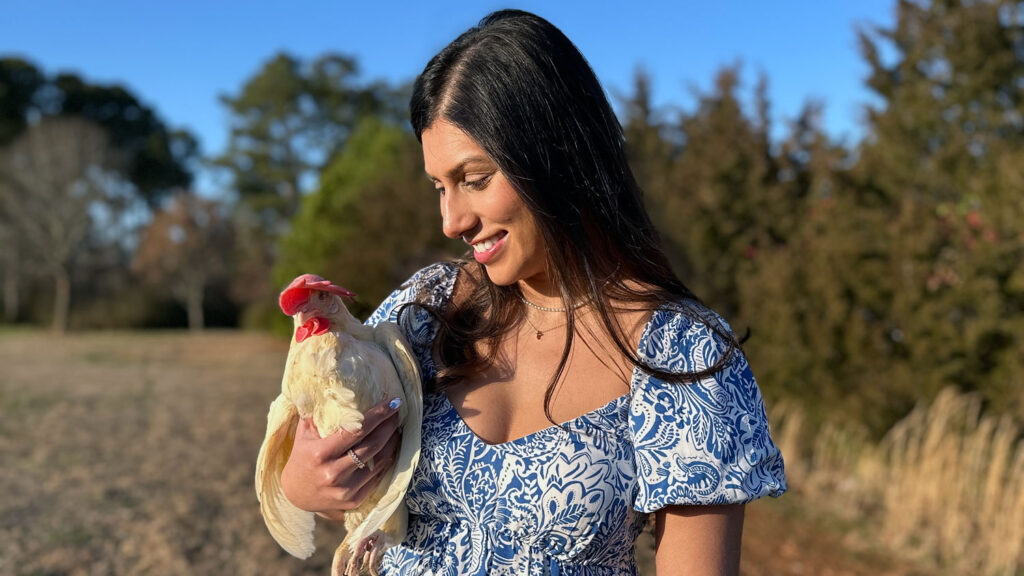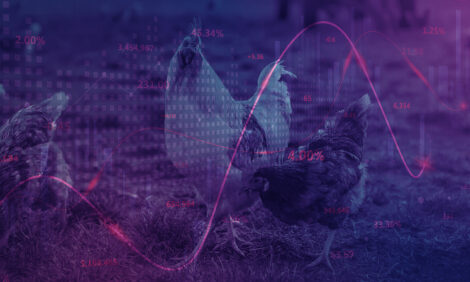



Research looks at laying hens best adapted to cage-free housing
Study compares hen performance in cage-free housing environmentWith more eggs in the grocery store coming from hens in cage-free housing — about 40% in early 2024 — commercial egg producers want to know which hens are best adapted to that environment.
To help answer their questions, an in-depth study at North Carolina State University evaluated egg production, egg quality, stress and behavior in two strains of white and two strains of brown hens.
Over 70 years, poultry breeders have developed strains of white leghorn hens like the H&N White and Hy-Line W-36 for conventional poultry houses. Strains like the Hy-Line Brown and Bovan Brown, in contrast, are typically raised in cage-free, pasture or free range systems.
For the 72-week cage-free comparison, hens from the four strains were housed in separate pens with a three-rung ladder perch, a roost and four nesting boxes.
“It’s an environment that would be equivalent to a single level, cage-free system on a commercial scale,” explained Bhavisha Gulabrai, an NC State master’s graduate and lead author of the study in the journal Poultry Science.

Animal welfare
In cage-free housing, thousands of hens can fly around freely inside a poultry barn. However, fearful or skittish hens can injure themselves by crashing into walls or workers. Researchers hope to find genetic strains of birds that are calmer and better adapted to a cage-free environment.
To measure stress in the birds, Gulabrai worked with Allison Pullin, an assistant professor of animal welfare in NC State’s Prestage Department of Poultry Science.
Pullin developed two new tests to measure behavioral reactivity in the hens. The first uses a startle chamber, where birds eat tasty mealworms as they acclimate to the space. After a few days of acclimation, a loud sound is played to startle the hens, and their responses are measured.
The second test is an inversion test in which handlers turn birds upside down and look at how intensely they flap their wings. Thermal imaging is used before and after each test, producing colorful maps of blood flow in the chickens.
“When you think about a fight or flight response, an animal undergoes these almost immediate vascular changes to try to direct blood flow to the most crucial arteries,” Pullin said. “Looking at the degree of temperature change, as well as how rapidly it changes, can give us an interesting physiological measurement about how that animal is really coping with stress.”
Fast, steep changes indicate higher stress than slower or lower-level reactions, she added.
One of the white strains of hens, the Hy-Line W-36, did not undergo the behavior tests because they had been reared in cages prior to the start of the study.
Genetic differences
Based on production and quality metrics, one of the brown strains performed best.
“When we looked at production and egg quality, the Hy-Line brown strain did better than the three other strains used in the study. They just had better egg production and better egg quality metrics compared to the three other strains,” said Gulabrai, who is currently pursing her doctorate in agricultural and human sciences at NC State.
The H&N White hens ranked lowest. “We think that they probably had a more difficult time adjusting to the cage-free system,” Gulabrai said. “Visually and anecdotally, white strains are more flighty and our H&N White strain remained pretty flighty throughout the entire 72 weeks.”
But all of the results were not as clear cut. Bovan Browns, surprisingly, were the least efficient, consuming the most feed while laying smaller eggs.
Overall, both strains of white hens, the Hy-Line W-36 and H&N White, produced lower-quality eggs than the brown strains in the cage-free environment.
Because types of cage-free poultry housing vary, egg producers will have to look at the research findings with their own facilities in mind, said Gulabrai, who is pursuing a Ph.D. in agricultural and human sciences at NC State with a concentration in agricultural communication.
“The farmer knows what kind of housing they have, so they would have to consider these results and make decisions based on what they think the best strain would be for their particular housing environment.”
Gulabrai’s research was supported with a grant from the Animal Health and Nutrition Consortium, a public–private partnership of animal health companies, biotechnology companies and university scientists. NC State co-authors Ken Anderson, professor and director of the North Carolina Layer Performance and Management Program, and Aaron Kiess, Braswell Distinguished Professor in the Prestage Department of Poultry Science, contributed to the study.








